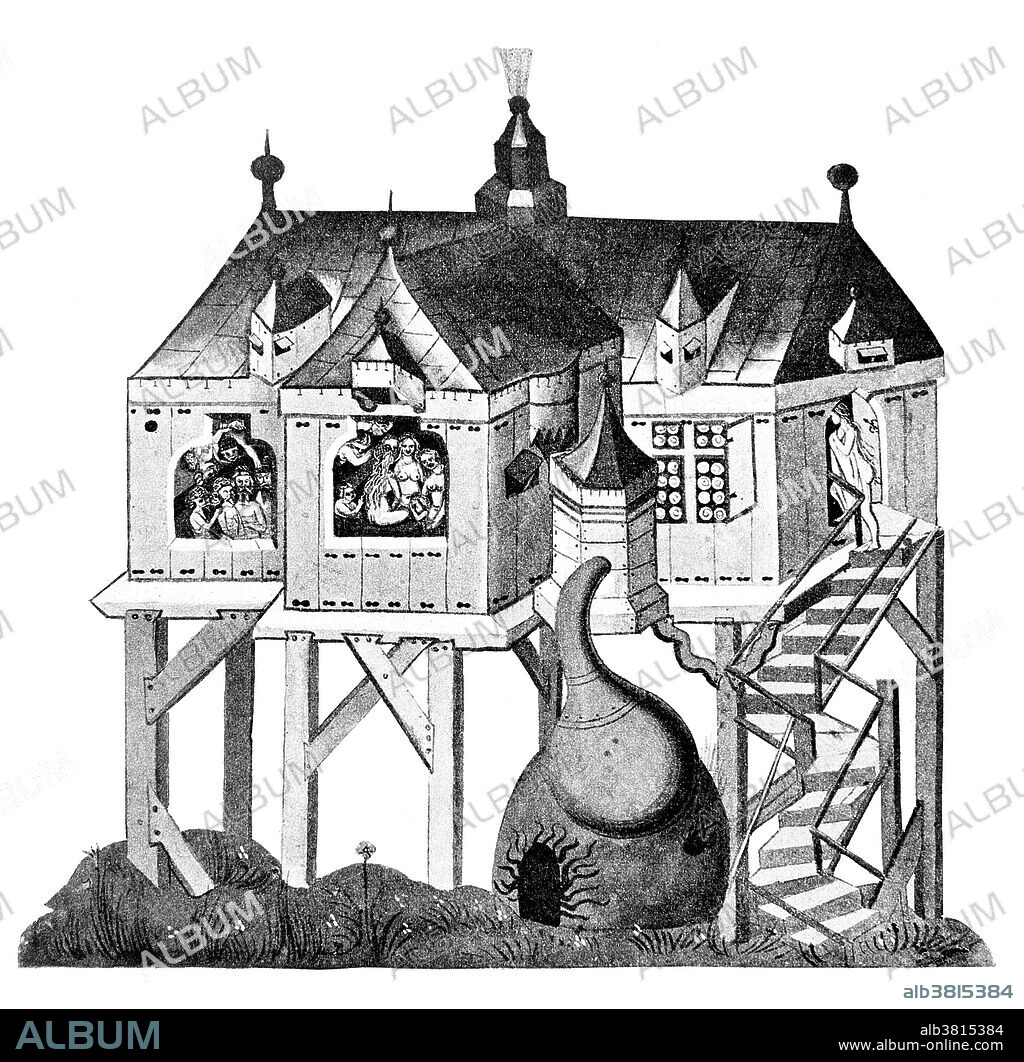alb3815384
Balneology, German Bath House, 1405

|
Add to another lightbox |
|
Add to another lightbox |



Buy this image.
Select the use:

Title:
Balneology, German Bath House, 1405
Caption:
German bath house. Roman style public baths were introduced on a limited scale by returning crusaders in the 11th and 12th centuries, who had enjoyed warm baths in the Middle East. These, however, rapidly degenerated into brothels or at least the reputation as such and were closed down at various times. They were all officially closed down by Henry VIII in 1546 due to their negative reputation. Public baths originated from a communal need for cleanliness at a time when most people did not have access to private bathing facilities. In ancient times public bathing included saunas, massages and relaxation therapies. Members of the society considered it as a place to meet and socialize. Public bathing could be compared to the spa of modern times. Balneology is the branch of medical science concerned with the therapeutic value of baths, especially those taken with natural mineral waters. Balneotherapy may involve hot or cold water, massage through moving water, relaxation or stimulation. Many mineral waters at spas are rich in particular minerals (silica, sulfur, selenium, radium) which can be absorbed through the skin. Image appeared in "Deutsches Badewesen in vergangenen Tagen" by Alfred Martin, 1405.
Category:
ILLUSTRATION • black & white • Medical: History
Credit:
Album / Science Source / Wellcome Images
Releases:
Image size:
3780 x 3723 px | 40.3 MB
Print size:
32.0 x 31.5 cm | 12.6 x 12.4 in (300 dpi)
Keywords:
1400S • 1405 • 15TH CENTURY • ART • ARTWORK • BALNEOLOGY • BATH HOUSE • BATH • BATH-HOUSE • BATHERS • BATHING • BLACK & WHITE • BW • CLEANSE • CLEANSING • DETOXIFICATION • DETOXIFYING • DRAWING • EUROPE • EUROPEA • EUROPEAN • EUROPEANS • GERMAN • GERMANS • GERMANY • HISTORIC • HISTORICAL • HISTORY • HYGIENE • HYGIENIC • ILLUSTRATION • ILLUSTRATIONS • ILUSTRATION • MEDICAL • MEDICAL: HISTORY • MEDICINAL • MEDICINE • MEN • PEOPLE • PUBLIC BATH • SAUNA • SCIENCE • STEAM BATH • STEAM ROOM • STEAM-BATH • STEAM-ROOM • STEAMBATH • STEAMROOM • SWEAT • SWEATING • SWIMMERS • THERAPEUTIC • THERAPEUTICAL • THERAPY • VAPOR BATH • VAPOR-BATH • VAPOUR BATH • VAPOUR-BATH • WOMEN
 Pinterest
Pinterest Twitter
Twitter Facebook
Facebook Copy link
Copy link Email
Email
